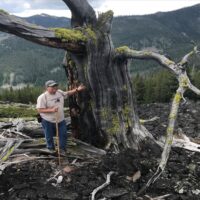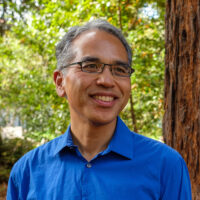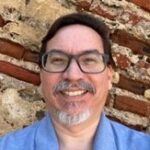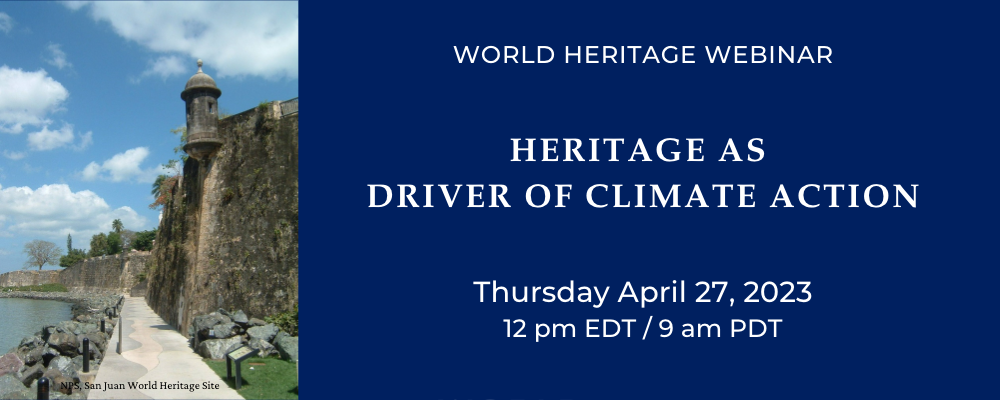Heritage as Driver of Climate Action
A recording of this webinar can be found here
This webinar took place on 27 April 2023
The theme of this year’s International Day of Monuments and Sites, “Heritage Changes,” is dedicated to showcasing heritage practices that contribute to climate resilience. In keeping with this theme, our April World Heritage Webinar focuses on how efforts to preserve cultural heritage can lead to climate action. Join us to learn how the preservation of indigenous knowledge contributes to the safeguarding of cultural landscapes, and how the preservation of historic sites increasingly requires the implementation of climate mitigation strategies.
This webinar is free/contribution optional.
Our Speakers
Michael Durglo, Jr., Tribal Historic Preservation Department Head, Confederated Salish Kootenai Tribes (CSKT)
 Michael Durglo has been a leader in climate change work for over a decade. He facilitated the development of a Flathead Reservation Climate Change Strategic Plan for the Confederated Salish Kootenai Tribes (CSKT). He shares his experience and knowledge of climate adaptation planning at workshops and seminars throughout the U.S. and Canada. After completing the plan, he continued to build on the work by diving deep into the perspectives of the elders and integrating traditional knowledge into the plan. In 2016, Michael received the White House Champion of Change award. In 2017, he received the Climate Leadership Award for Natural Resources.
Michael Durglo has been a leader in climate change work for over a decade. He facilitated the development of a Flathead Reservation Climate Change Strategic Plan for the Confederated Salish Kootenai Tribes (CSKT). He shares his experience and knowledge of climate adaptation planning at workshops and seminars throughout the U.S. and Canada. After completing the plan, he continued to build on the work by diving deep into the perspectives of the elders and integrating traditional knowledge into the plan. In 2016, Michael received the White House Champion of Change award. In 2017, he received the Climate Leadership Award for Natural Resources.Patrick Gonzalez, Executive Director of the Institute for Parks, People, and Biodiversity, University of California, Berkeley
 Patrick Gonzalez is a climate change scientist, forest ecologist, and Executive Director of the University of California, Berkeley, Institute for Parks, People, and Biodiversity. Previously, he served as Assistant Director for Climate and Biodiversity of the White House Office of Science and Technology Policy and as Principal Climate Change Scientist of the U.S. National Park Service. He advances science-based action on human-caused climate change to protect nature and people, through research on climate change, ecosystems, wildfire, and carbon solutions and assistance to local people. Dr. Gonzalez has conducted field research in Africa, Latin America, and the U.S., published in Science and other journals, and assisted local people and field managers in 25 countries and 269 U.S. national parks. He has stood publicly for scientific integrity and broadened public understanding of climate change in the New York Times and other media. Dr. Gonzalez has served as a lead author for four reports of the Intergovernmental Panel on Climate Change, the science panel awarded a share of the 2007 Nobel Peace Prize.
Patrick Gonzalez is a climate change scientist, forest ecologist, and Executive Director of the University of California, Berkeley, Institute for Parks, People, and Biodiversity. Previously, he served as Assistant Director for Climate and Biodiversity of the White House Office of Science and Technology Policy and as Principal Climate Change Scientist of the U.S. National Park Service. He advances science-based action on human-caused climate change to protect nature and people, through research on climate change, ecosystems, wildfire, and carbon solutions and assistance to local people. Dr. Gonzalez has conducted field research in Africa, Latin America, and the U.S., published in Science and other journals, and assisted local people and field managers in 25 countries and 269 U.S. national parks. He has stood publicly for scientific integrity and broadened public understanding of climate change in the New York Times and other media. Dr. Gonzalez has served as a lead author for four reports of the Intergovernmental Panel on Climate Change, the science panel awarded a share of the 2007 Nobel Peace Prize.
Felix J. Lopez, Cultural Resources Program Manager, San Juan National Historic Site
 Felix J. Lopez is the Cultural Resources Program Manager at the San Juan National Historic Site. He started his career with the National Park Service in 1999. The historic site is the only unit of the National Park Service (NPS) in Puerto Rico and part of the La Fortaleza and San Juan National Historic Site World Heritage Site. The site includes the majority of the fortifications built by the Spanish in San Juan. Mr. Lopez manages the museum, archival, and library collections, in addition to being responsible for the artillery conservation program, the only one of its kind in Puerto Rico and the Caribbean. He has overseen the documentation of the various resources contained in the historic site. These efforts have culminated in the publication of the first Historic Structure Report of Fort San Juan de la Cruz (El Cañuelo), the Historic Structure Report Report of Building 211 (Superintendent’s Residence), the Cultural Landscape Report for the Exterior Defenses of Castillo San Cristóbal, among others. These efforts have led him to serve on the NPS Southeast Region Cultural Resources Council (2018-2020) which is comprised of 73 parks. Currently, Mr. López is leading research efforts on the impacts of climate change in the historic site.
Felix J. Lopez is the Cultural Resources Program Manager at the San Juan National Historic Site. He started his career with the National Park Service in 1999. The historic site is the only unit of the National Park Service (NPS) in Puerto Rico and part of the La Fortaleza and San Juan National Historic Site World Heritage Site. The site includes the majority of the fortifications built by the Spanish in San Juan. Mr. Lopez manages the museum, archival, and library collections, in addition to being responsible for the artillery conservation program, the only one of its kind in Puerto Rico and the Caribbean. He has overseen the documentation of the various resources contained in the historic site. These efforts have culminated in the publication of the first Historic Structure Report of Fort San Juan de la Cruz (El Cañuelo), the Historic Structure Report Report of Building 211 (Superintendent’s Residence), the Cultural Landscape Report for the Exterior Defenses of Castillo San Cristóbal, among others. These efforts have led him to serve on the NPS Southeast Region Cultural Resources Council (2018-2020) which is comprised of 73 parks. Currently, Mr. López is leading research efforts on the impacts of climate change in the historic site.


.JPG)
